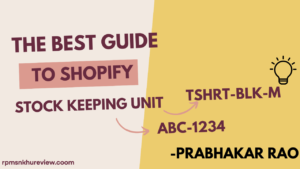In today’s digital world, choosing the right marketing strategy (Organic Marketing or Paid Marketing) can make or break a business. As a professional blogger and SEO expert, I’ll guide you through the pros and cons of organic and paid marketing, helping you decide which approach aligns best with your business goals.
What is Organic Marketing?

Organic marketing is a strategy focused on building an audience through content and engagement without directly paying for exposure. It’s about cultivating trust, developing a loyal audience, and achieving long-term results through tactics like:
- Content Marketing: Creating valuable, informative content that attracts and retains your audience.
- Social Media Engagement: Building relationships and engaging with followers on platforms like Instagram, LinkedIn, and Twitter.
- Search Engine Optimization (SEO): Optimizing your website to rank organically on search engines like Google.
Benefits of Organic Marketing
- Cost-Effective: With minimal costs, organic marketing can provide a high return on investment over time.
- Long-Term Results: Unlike paid ads that disappear once the budget ends, organic marketing efforts continue to bring in traffic.
- Builds Brand Trust: A steady stream of quality content builds credibility, fostering stronger customer relationships.
What is Paid Marketing?

Paid marketing involves investing in advertisements to reach a targeted audience quickly. Common paid marketing tactics include:
- Pay-Per-Click (PPC) Ads: Search engine ads where you pay only when a user clicks.
- Social Media Ads: Targeted ads on social platforms like Facebook, Instagram, and LinkedIn.
- Influencer Partnerships: Collaborating with influencers to promote your brand to their followers.
Benefits of Paid Marketing
- Instant Results: Paid marketing delivers quick results by reaching a wide audience immediately.
- Targeted Reach: You can target audiences based on demographics, interests, and behaviours.
- Data-Driven Insights: Platforms like Google and Facebook offer detailed analytics to help refine campaigns for better results.
Comparing Organic and Paid Marketing: Pros and Cons
Organic Marketing Pros and Cons
| Pros | Cons |
|---|---|
| Cost-effective over time | Takes longer to see results |
| Builds trust and authority | Requires consistent effort |
| Drives long-term, sustainable traffic | Results can be unpredictable |
Paid Marketing Pros and Cons
| Pros | Cons |
|---|---|
| Quick, measurable results | Can be costly |
| Highly targeted, reaching specific groups | Stops bringing traffic when budget ends |
| Great for launching new products | Often lacks long-term engagement |
When to Use Organic Marketing vs. Paid Marketing
Organic marketing is ideal for businesses with a limited budget, startups building brand awareness, and those who aim for a long-lasting, trust-based audience. Here are some scenarios when organic marketing shines:
- Building Brand Loyalty: Organic marketing creates a foundation for businesses that value trust and customer loyalty.
- Niche Markets: For niche audiences, organic efforts allow for steady, organic growth without high competition.
Paid marketing, on the other hand, is the right fit when quick results are necessary, such as for promoting a time-sensitive offer or when entering a competitive market. Use paid marketing when:
- Launching New Products: Paid ads generate fast buzz around new offerings.
- Competing in High-Demand Spaces: Paid strategies can outpace competitors in a crowded marketplace.
Combining Organic and Paid Marketing for Maximum Impact
Many successful brands leverage a mix of both organic and paid marketing for the best results. Here’s how you can combine them effectively:
- Boost Organic Content: Use paid ads to promote high-performing organic content, extending its reach to a wider audience.
- Retarget Interested Users: Run retargeting ads for visitors who engage with your organic content, nudging them closer to conversion.
- Use Organic Insights for Paid Ads: Analyze your organic performance data to optimize paid campaigns, focusing on content that resonates.
Combining organic and paid efforts can build a powerful marketing funnel where organic content builds trust, and paid ads drive conversions.
Conclusion: Which is Better for Your Business?
Both organic and paid marketing have their strengths. Here’s a quick recap to guide your decision:
- Organic Marketing is cost-effective, sustainable, and builds a loyal audience, making it great for businesses with a long-term focus and limited budget.
- Paid Marketing delivers quick, measurable results, ideal for product launches and businesses aiming for rapid growth.
Ultimately, the choice depends on your goals, budget, and timeline. For the best results, consider blending organic and paid strategies, allowing you to reach a broad audience while building lasting connections with your customers.
FAQs
Q: How can I decide whether to invest more in organic or paid marketing?
A: Start by identifying your goals and budget. For long-term brand growth, focus on organic. If you need rapid awareness or conversions, prioritize paid marketing.
Q: Can organic marketing work without paid ads?
A: Yes, organic marketing can stand alone and bring consistent results over time. However, paid ads can amplify your reach and fast-track your efforts.
Q: Which platforms are best for organic and paid marketing?
A: For organic marketing, SEO and social media platforms like Instagram and LinkedIn are powerful. For paid marketing, Google Ads, Facebook, and Instagram offer effective targeting options.



